
Lawns to Legumes: Your Yard Can Bee the Change
Are you concerned about the fate of pollinators, especially the endangered Rusty Patched Bumble Bee, Minnesota’s official state bee?
It’s time to get pro-active! Take advantage of this opportunity to take action to increase pollinator habitat in your own yard and help clean water at the same time by adding native plants with their long roots that slow erosion, conserve water and offer habitat, nectar and pollen to threatened pollinators and other wildlife! (photo by Kathy Sidles, an East St. Paul bee monitor, taken at a wetland south of Lake Phalen).
How can you support your community’s efforts to restore habitat for pollinators?
The Board of Water and Soil Resources (BWSR) has recently launched the Lawns to Legumes Program to increase habitat for at-risk pollinators across the state. This new grant program https://bwsr.state.mn.us/l2l is made possible through an appropriation from the Environment and Natural Resources Trust Fund (ENRTF).
Blue Thumb, “Planting for Clean Water and Pollinators,” a program of Metro Blooms, is administering this Lawns to Legumes residential grant program. All Minnesota residents are eligible to apply for a $350 cost-share grant to establish pollinator habitat in their yards. Applications will be selected through a randomized drawing; however priority will be given to projects within higher priority areas and to insure a fair geographical distribution of grantees. The Twin Cities metro area is, in general, a high priority area in the state. The Board of Water and Soil Resources is also administering a neighborhood demonstration grant program.
Why Was the Lawn to Legumes Program Developed?
The Lawns to Legumes program aims to protect the federally endangered state bee, the Rusty Patched Bumblebee, and other at-risk pollinators. Even relatively small plantings of native flowering plants can help pollinators by building and connecting important habitat corridors. It is imperative that there are flowers that bloom at different times of the year to insure a food supply from early spring to late fall for the rusty-patched bumblebees and other threatened pollinators. Minnesota is home to more than 450 native bee species. Minnesota is lucky to be a hotbed of bumble bee species diversity. We are home to 22 of North America’s 49 species of bumble bees, including several species that have disappeared from other parts of their range and are in need of conservation. Pollinators also include butterflies, moths, beetles, hummingbirds, and flies. All play a key role in pollinating many food crops and native plants, but populations have significantly declined worldwide in recent years. Population decline can be attributed to habitat loss and lack of related nutrition for pollinators, as well as pesticide use and pathogens.
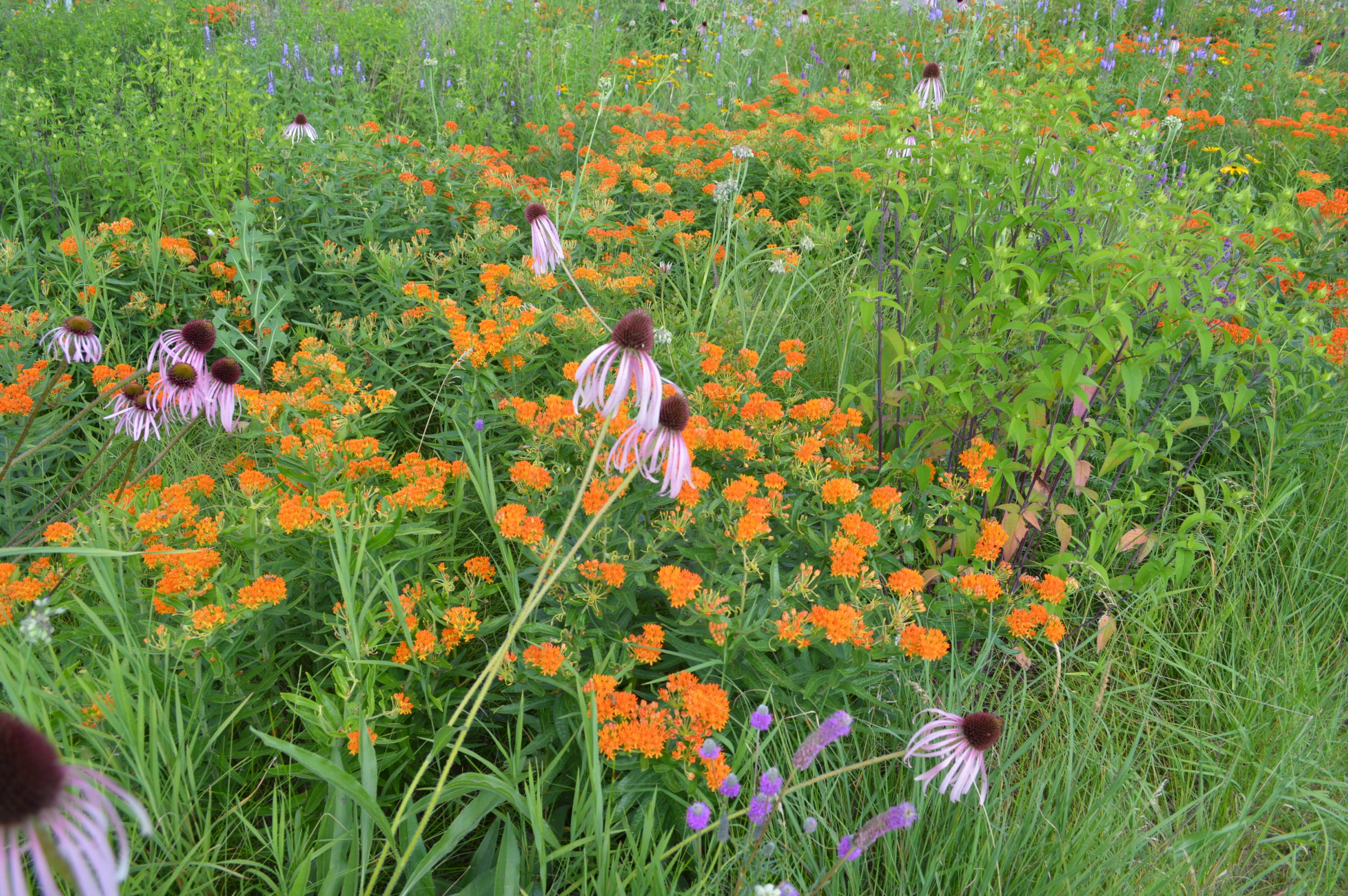
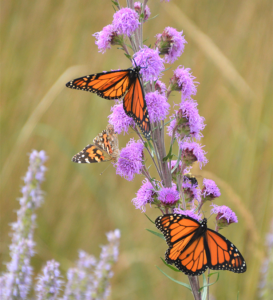
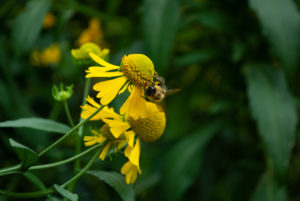

You Can Apply for Individual Residential $350 habitat grants to support pollinators
RWMWD, a Blue Thumb partner member, is encouraging residents to apply for the individual residential $350 grants and join in these efforts. Both components of the program (individual and neighborhood residential demonstration projects) can offer cost-share funding, workshops, coaching and site visits. Upcoming workshops are listed below to help you with your projects. Additional workshops in other cities or locations in our watershed will be added as time allows and as interest grows. In the meantime, you can access many informative resources on line to help you get started. The application is here: https://bluethumb.org/apply-for-lawns-to-legumes-assistance/
Lawns to Legumes Grant Application Deadlines
The first application deadline for the $350 state Lawns to Legumes grants for residential projects is February 28th. A second application period will open March 1st. This simple application is available online here. If you do not receive a grant in the first round, you can opt to have your name added to the list for the second round. You can also choose to be contacted by your local watershed or other local agencies to find out about other options for support for these kinds of projects. There are many resources online to help you move forward in your efforts to increase pollinator habitat in your yard.
Additional Stewardship Grants Options Provided by RWMWD
If you do not receive a grant from the state, please do not be discouraged! There are other possibilities for assistance and funding if you live within our watershed district. You can apply for habitat restoration grants for your yard through Ramsey-Washington Metro Watershed District’s Stewardship Grant Program. RWMWD habitat grants offer a 50% cost-share up to $15,000 and there may be even higher levels of funding if your project meets other criteria related to water quality benefits through rain garden and shoreline restoration projects. RWMWD may be able to expand your habitat project area through our cost share funding even if you do receive one of BWSER’s Lawn to Legumes $350 grants. Go to our stewardship grants page for more information. Grant details may be found in our Stewardship Grant Program Guide.
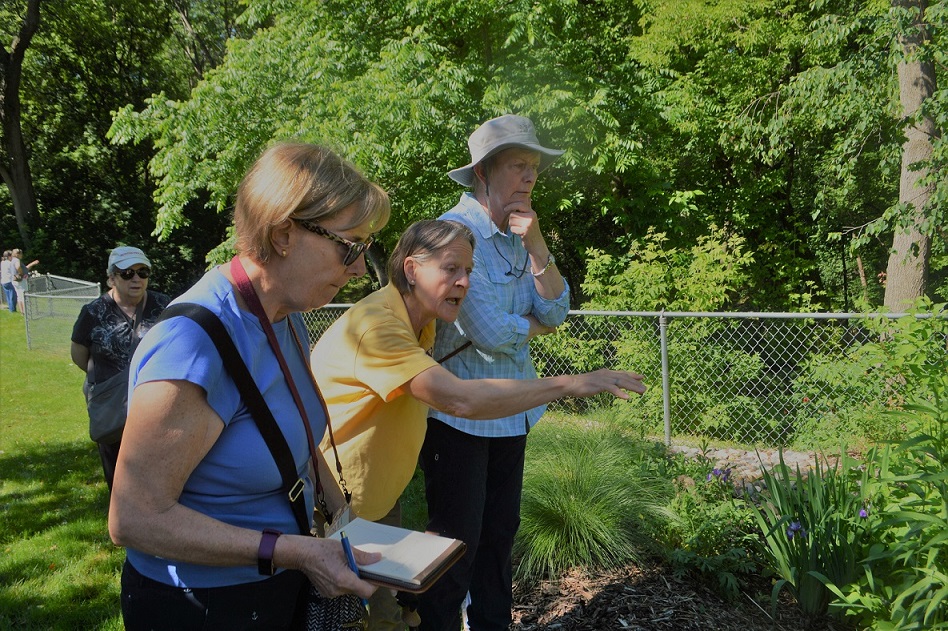
Upcoming Neighborhood Pollinator Demonstration Projects: Congratulations, Maplewood!
The Minnesota Board of Water and Soil Resources recently selected partners for thirteen neighborhood demonstration projects across the state of Minnesota in high priority areas for the rusty patched bumblebee and other pollinators. The Request for Proposal timeline for these demonstration projects ended on January 24.
We are happy to announce that the City of Maplewood has been awarded a Lawns to Legumes neighborhood demonstration grant! Maplewood is currently working to identify which neighborhoods will implement these residential neighborhood demonstration projects. If you live in the city and are interested in being considered for their demonstration neighborhood grant project, please contact Carole Gernes at carole.gernes@maplewoodmn.gov
Maplewood, RWMWD and local volunteers (Master Gardeners, Master Water Stewards and Master Naturalists) will work together to support residents in their education, design and installation process using these four types of beneficial planting practices: native pocket plantings, pollinator beneficial trees and shrubs, pollinators lawns and pollinator meadows. These projects will be installed over the next two years. More workshops will be scheduled to help residents prepare for these projects.

What are the four main types of pollinator-beneficial planting practices that are recommended?
Pollinator pocket plantings: A space as small as 10 square feet can serve as pollinator habitat. Native pocket plantings are small clusters of native flowers and grasses that can provide places for pollinators to rest and feed from spring through fall. This practice is recommended for new gardeners or those with small areas they would like to plant in their yard. https://bluethumb.org/native-plant-gardens/pocket-plantings/
Beneficial Pollinator friendly trees and shrubs: Groupings of trees and shrubs can offer nesting areas, overwintering habitat and food sources for pollinators. Beneficial species include willows, American basswood trees, raspberry bushes, black chokeberry and others. This practice is recommended for new and intermediate gardeners. https://bluethumb.org/native-plant-gardens/pollinator-beneficial-trees-and-shrubs/
Pollinator lawns: Species such as Dutch white clover, fine fescues and creeping thyme are seeded into lawns or low-growing native plants to provide habitat for ground-nesting bees. Because these projects require a significant commitment in terms of installation and maintenance, they are recommended for experienced gardeners. https://bluethumb.org/turf-alternatives/pollinator-lawn/
Pollinator meadows: Large plantings of diverse native plants provide habitat and water-quality benefits. Pollinator meadows require additional planning and maintenance; they’re recommended for experienced gardeners. https://bluethumb.org/native-plant-gardens/pollinator-meadows/
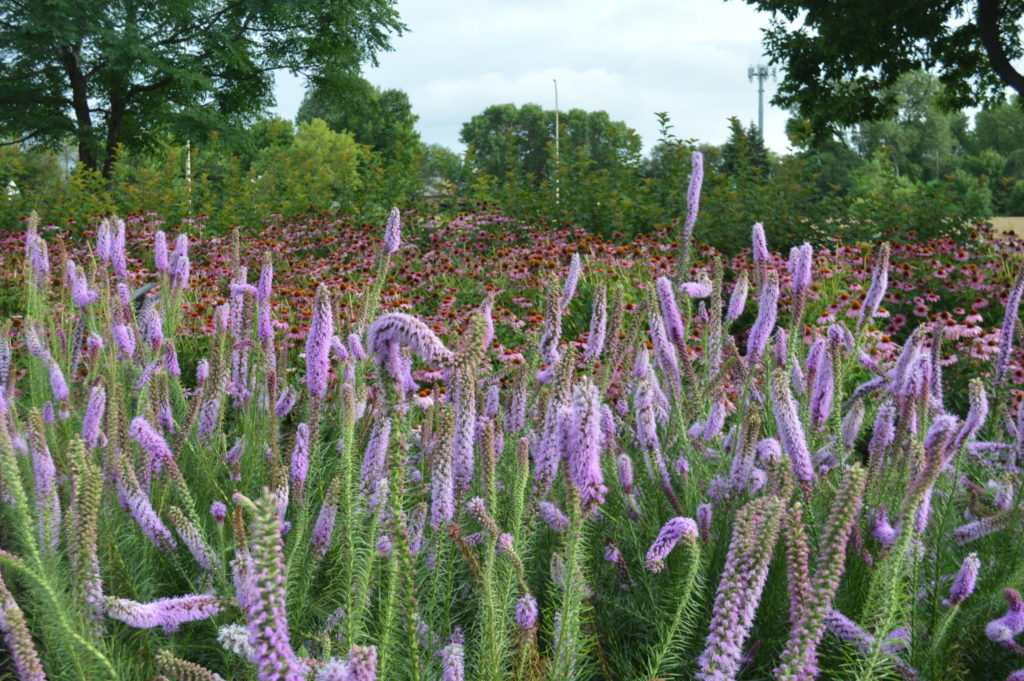
How can I tell if my neighborhood or residence is in a high priority area for rusty-patched bumblebees or other threatened pollinators?
Zoom in to see high priority rusty patched bumblebee areas in and around RWMWD, especially if you are interested in being considered for having your yard be included in the city of Maplewood’s demonstration grant. The orange areas are the highest priority so you need to zoom in close to be sure that your home is included. The neighborhood demonstration projects in Maplewood require these projects to be in “high priority areas’.
This map can help you become attuned to where surveys to date have revealed the presence of the rusty patched bumblebees. There is a fair amount of research being done about the rusty patched bumble bees, and these and other bumblebees and other threatened pollinators need further study. Use the information from this map to build your own curiosity, excitement and to motivate yourself and others to enhance habitat in your yards.
IMPORTANT: Even if your neighborhood or residence doesn’t currently fall into the high priority areas, it does not mean that there are not rusty-patched bumblebees located in your neighborhood that need your support through habitat restoration projects and best practices to support their survival.They may be living and overwintering around you, but are not yet documented. There are many other pollinators – bees and butterflies – that are threatened as well, and your habitat improvements can also make a difference for them!
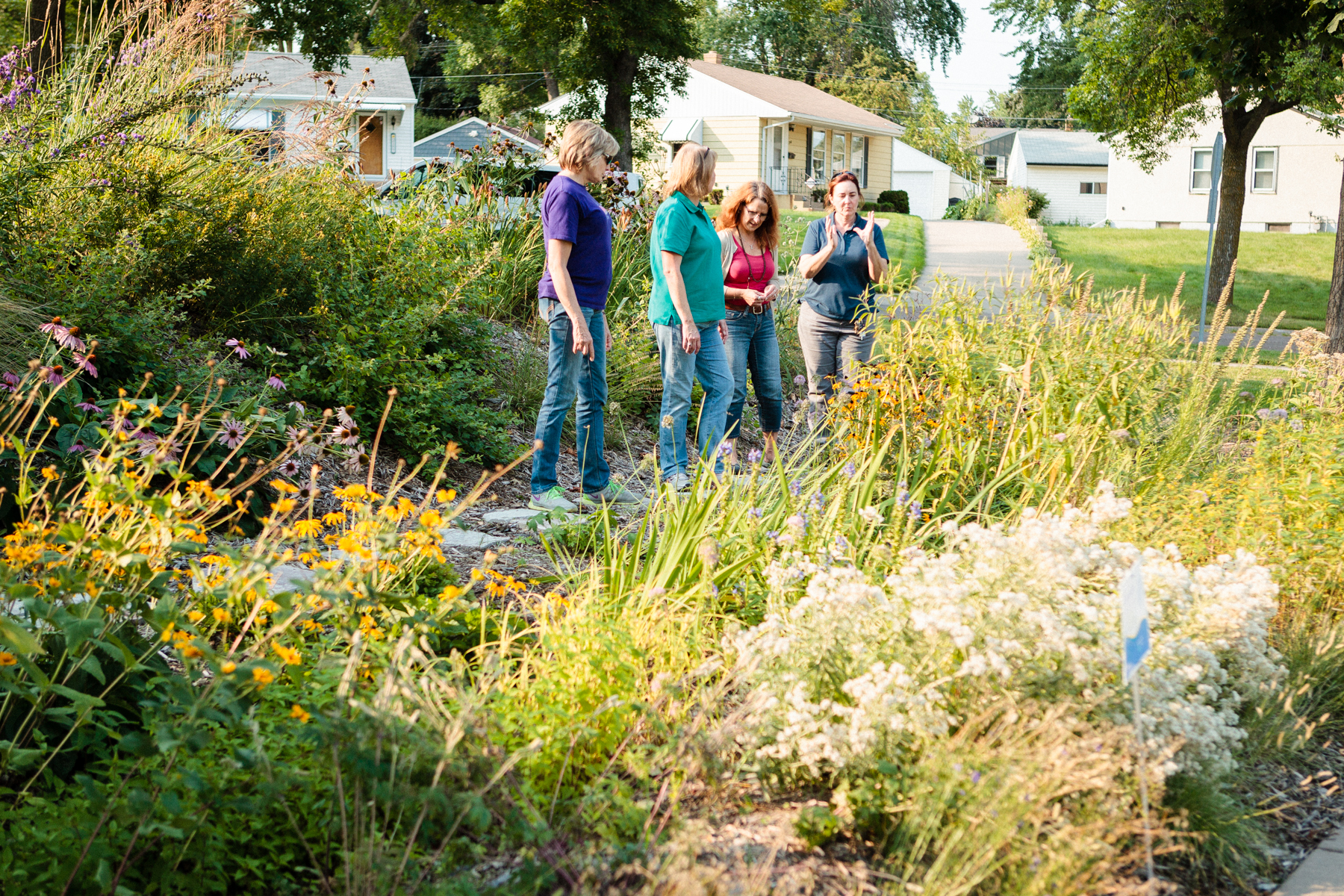
How can I find more information about pollinator and bee monitoring here and around the state, the US and beyond?
Here are several links to several different monitoring programs being used locally, around the state, the United States and beyond to document bees and other pollinators.
BumbleWatch: https://www.bumblebeewatch.org/
Minnesota Bee Atlas https://extension.umn.edu/natural-resources-volunteers/minnesota-bee-atlas
Minnesota Bumblebee Survey http://www.befriendingbumblebees.com/survey.html
Lawns to Legumes Workshops Scheduled This Winter and Spring
Free introductory workshops are now being scheduled throughout our Watershed District and at other Metro area locations to help you become familiar with the program, access resources and complete your grant application. See the schedule below:
IMPORTANT UPDATE – 3/17/20
Based on guidance from the Center for Disease Control (CDC) and Minnesota Department of Health, we will be cancelling these 2 workshops to help prevent the spread of COVID-19 in our communities. In the meantime, please join us for a live webinar at the scheduled workshop time. The link for the webinar will be posted on the EventBrite & Facebook event pages – follow the registration link below (no preregistration will be required):
- Wednesday, March 25, 6 PM-8 PM, Blue Thumb Workshop:Planting for Pollinators, North St. Paul City Hall, Fire Training Room, 2nd floor, 2400 Margaret St N, North St Paul, sponsored by Blue Thumb, Washington Conservation District (East Metro Water Resources Education Program) and RWMWD. James Wolfin, a well known local bee expert will be one of the presenters. Free online registration here.
- Tuesday, April 7, 6:00 PM-8:00 PM, Blue Thumb Workshop:Planting for Pollinators, Woodbury City Hall (City Council Chambers), 8301 Valley Creek Road, Woodbury, sponsored by Blue Thumb, Washington Conservation District, (East Metro Water Resources Education Program) and RWMWD. Free online registration here.
Additional workshops sponsored by RWMWD will be scheduled in Roseville and Saint Paul as time permits. Check back on our events page for more details on our website at www.rwmwd.org
Blue Thumb is scheduling Lawns to Legumes workshops this spring. Go to their events page for a more complete list that will be available soon. They currently have one train the trainer workshop scheduled for early March but more trainings for the public will be scheduled soon. https://bluethumb.org/events/
Written resources including garden template designs, plant lists, site preparation recommendations, bee habitat needs and maintenance guidance are available on the Board of Water and Soil Resources webpage for Lawns to Legumes. Scroll down and click to your heart’s content.
The Pollinator Design Guidebook is just one of the many useful resources you will find in the Resources section!